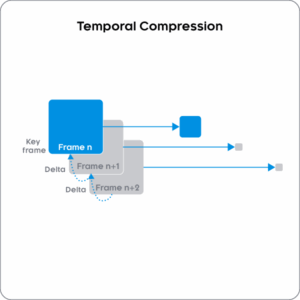Temporal Compression: What to Know
Temporal compression is a video compression technique that reduces file size by eliminating redundant data between frames, optimizing storage and bandwidth usage.
It is a method used in video encoding that reduces redundancy between successive frames to achieve efficient storage and transmission. Instead of storing each frame independently, temporal compression identifies and removes duplicated elements across multiple frames, significantly lowering the required data without sacrificing visual quality.
This technique is commonly used in video streaming, broadcasting, and IP-based media transport, where bandwidth efficiency is crucial. By analyzing motion changes between frames, temporal compression enables smoother playback and optimized resource allocation, making it an essential component of modern media workflows.
Temporal Compression vs. Spatial Compression
Temporal compression is particularly effective in video-on-demand (VOD) platforms, live streaming, and remote production, where smooth motion and efficient data transmission are priorities.
